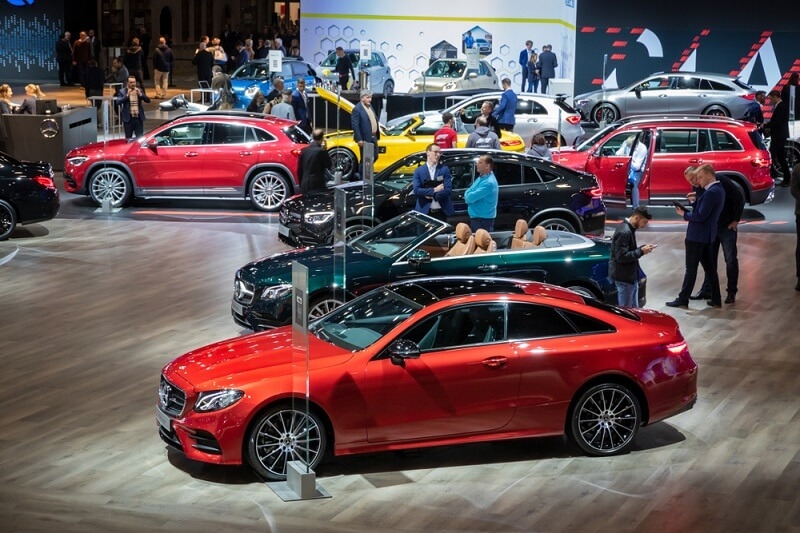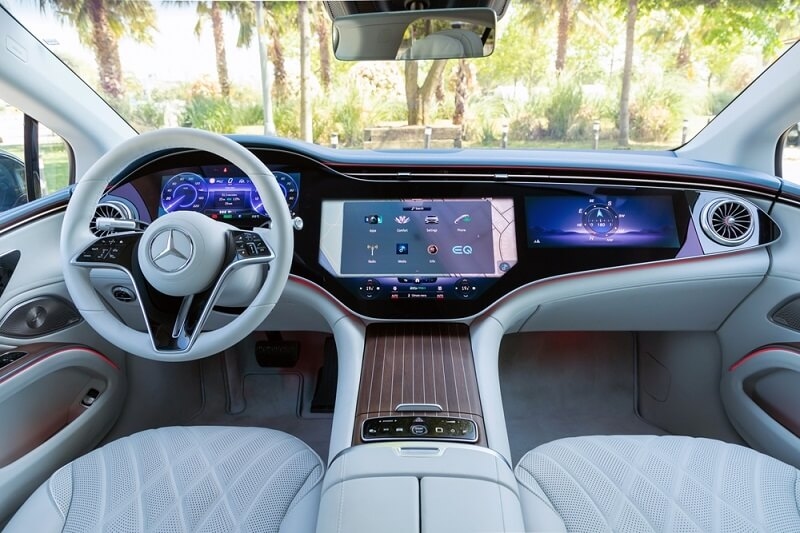BMW vs Mercedes vs Audi Which Luxury Brand Reigns Supreme

For years, BMW, Mercedes, and Audi have rivaled each other, resulting in the luxury car market we have today. These German automakers redefine excellence in terms of build quality, performance, and technology. In this luxury sedan review, we will dissect the strengths of the BMW, Mercedes, and Audi brands through a performance comparison, examination of tech features, and an assessment of the interior comfort to determine which luxury car is the best fit for you.
While BMW focuses on a sporting heritage, Mercedes emphasizes smart elegance, and Audi advances technology, they all represent an experience for a driving personality and exemplify premium vehicles.
BMW vs Mercedes vs Audi Comparison
All German sedans feature an engine designed to offer both performance and refinement. However, how each brand interprets that power to drive character is what makes each brand feel distinct.
Brand Identity and Philosophy
Recognizing what establishes each brand will prepare us for comparing BMW, Mercedes, and Audi.
BMW – The Ultimate Driving Machine
BMW has a long historical tie to driver interaction. The BMW brand values evenly balanced handling, well-weighted steering, and powerful engines that create a direct relationship between driver and car. Whether it’s the 3 Series or 7 Series, cars produced by BMW aim to make the driving experience rather than simply a necessity.
Mercedes-Benz – The Definition of Prestige
Mercedes represents prominence and sophistication. Its sedans, including the C-Class and S-Class, provide a soft ride and preeminent safety systems. The Mercedes brand is focused on comfort and elegance, where every drive feels like a first-class experience.
Audi – The Tech-Savvy Innovator
Audi is renowned for its cutting-edge technology and distinctive design. Celebrated for its clean aesthetics and digital instances (ie, Virtual Cockpit), Audi is the brand of the future. Audi sedans such as the A4 and A8 blend power and innovation perfectly.
Each brand has its strengths in appealing to its specific luxury car driver: BMW for thrill-seekers, Mercedes for comfort-driven enthusiasts, and Audi for those seeking technical advances.
Performance Comparison and Driving Dynamics
Performance is often what shapes a luxury sedan’s real character, and here, performance is comparatively evaluated, and differences are apparent among these three brands.
BMW Performance
BMW vehicles are designed with rear-wheel drive performance characteristics to achieve nimble cornering capabilities and engaging feedback. Their turbocharged engines provide smooth yet powerful acceleration. Their suspension systems strike a balance between comfort and responsive handling, making the long-distance drive enjoyable and refined.
Mercedes Performance
Mercedes focuses on comfort, but never at the expense of ability. Many of their sedans offer dynamic driving modes, which enable the driver to shift instantly from relaxed cruising to powerful acceleration. Their engines are tuned to provide quiet confidence, power effortlessly, and leave the driver with a sense of stability.
Audi Performance
Audi's Quattro all-wheel drive remains one of the brand's most significant advantages. The Quattro system works, no matter the weather, to ensure grip and control. Audi sedans handle predictably, with a high level of confidence, while tackling a twisty road or slippery surface.
Performance Summary:
- BMW: Engaging and sporty performance with precise steering
- Mercedes: Smooth, authoritative, and elegant performance
- Audi: Confident grip and balanced handling, all made possible with Quattro technology
All these brands succeed in performance; ultimately, it becomes a choice in driving style, whether you prefer a dynamic driving experience like a BMW, a poised driving experience like a Mercedes, or a driving experience that works well in both wet and dry weather like an Audi.
Interior Comfort and Design

A luxury sedan is not just about how it drives; it is also about the feeling you get from the interior. The philosophy of comfort and design from BMW, Mercedes, and Audi shows the personality of each brand.
BMW Interiors:
BMW interiors are driver-oriented, featuring ergonomically designed dashboards crafted from high-quality materials. The layout is clean and functional, with driving experience as a priority. Even base models feature best-in-class details, including leather seats, ergonomic controls for easy driving, and ambient lighting to enhance the cabin's ambiance and comfort.
Mercedes Interiors:
Mercedes interiors create a luxurious feel. The materials are soft-touch, the wood trims are refined, and the seats are sculpted for comfort and tranquility. From the ambient lighting to the multi-contour seating, every detail enforces the experience of relaxation. The S-Class is the standard for interior comfort, combining craftsmanship and technology of the future.
Audi Interiors:
Audi is sleek, modern, and minimally designed, combined with high-tech characteristics. The clean lines and high-end materials provide an interior that is modern and professional. Coupled with touch-sensitive displays, cascading digital displays, and customizable internal lighting, the Audi cabin offers a technologically advanced feel for the driver.
Interior Comfort Summary:
- BMW provides sporty luxury with an intuitive layout.
- Mercedes offers the utmost comfort and elegance.
- Audi delivers an attractive and sleek design with modern technology.
All three offer premium interiors; however, BMW is driver-focused, Mercedes is luxury, and Audi is digital.
Tech Features and Innovation
Technology characterizes the contemporary luxury experience, and in this luxury sedan comparison, technology plays a central role in distinguishing BMW from Mercedes and Audi.
BMW Technology:
BMW incorporates its iDrive system, one of the most user-friendly infotainment interfaces available. With gesture controls, voice activation, and augmented navigation, this system is designed to provide an intuitive user experience. Advanced driver-assistance systems promote safety and convenience without overburdening the driver.
Mercedes Technology:
Mercedes' MBUX system (Mercedes-Benz User Experience) introduces artificial intelligence into the cabin. Enjoying voice recognition, natural speech control, and a huge dual-screen display, interacting with the system is simple. Mercedes has also focused on comfort technology, with massage seats, adjustable interior lighting, and intelligent drive assistance.
Audi Technology:
Audi's Virtual Cockpit remains a remarkable innovation, allowing drivers to personalize digital screens for navigation, media, and driving data. MMI touch response technology provides a seamless connection to smart devices, and driver-assistance abilities offer new levels of automation and safety.
Tech Features Highlights:
- BMW: Gesture and voice controls with sophisticated driver aids
- Mercedes: AI-driven infotainment system with premium convenience tools
- Audi: Completely digital cockpit and forward-thinking connectivity
In terms of tech features, Audi stands out with its futuristic design and connected features, Mercedes offers a strong user experience and intelligence, and BMW provides the best mix of innovation and driving experience.
Comfort and Ride Quality
The quality of ride is a vital aspect in reviewing a luxury sedan, and both brands are designed to provide distinctly, yet calm experiences.
BMW Ride Quality:
BMW vehicles are designed first to feel connected to the road, while also being comfortable and enjoyable. Their adaptive suspension, designed to react to changes in real time, allows for consistency and stability. The driver and passengers experience a ride that feels both smooth and responsive while riding comfortably and separately.
Mercedes Ride Quality:
Mercedes is about comfort first. The air suspension that Waterloo taps removes all harshness from the road. Indeed, no manufacturer's vehicle offers the same measure of peace that the cabin provides within the full luxury sedan range it appeals to. It would be the most fun if you had to cross country in these all day long.
Audi ride Quality:
Audi is a balanced and refined firm. The Quattro system obviously enhances overall stability, and the adaptive damping is excellent, smoothing out harsh rides on truly uneven surfaces. The show would feel secure and stable, while the passengers would be calm.
Ride Experience Recap:
- BMW: Balanced between comfort and agility
- Mercedes: Supreme comfort and serenity
- Audi: Stable and composed across conditions
Each brand delivers luxurious comfort, but Mercedes sets the bar for pure relaxation, BMW blends performance with ease, and Audi maintains confident composure.
Safety and Reliability
Safety is a primary concern for all luxury brands. Although there are differences based on the manufacturer and model, their sedans all employ advanced safety technology.
BMW Safety:
BMW's driver assistance package includes lane departure warning, adaptive cruise control, and collision mitigation. The BMW safety system emphasizes proactive safety based on intelligence.
Mercedes Safety:
Mercedes offers one of the most advanced safety packages with an adaptive braking system, a blind-spot assistance system, and an active lane-keeping system. Its Pre-Safe technology will prepare the cabin for impact at least ten seconds before a crash occurs.
Audi Safety:
Audi is a leader in safety features for driver aids, offering predictive pedestrian detection, adaptive cruise control, and lane guidance. Additionally, the drive-type structure adds to the car's crash protection and stability.
All three brands are known for safety systems and reliability. However, Mercedes leads slightly with their comfort-type safety systems. Audi and BMW focus more on active performance-based safety systems.
Final Verdict on BMW vs Mercedes vs Audi
Choosing between BMW, Mercedes, and Audi comes down to what you value most in a luxury sedan. BMW offers unmatched driving pleasure, Mercedes defines elegance and comfort, while Audi excels in modern design and digital innovation.
Each brand delivers excellence in its own right, ensuring that luxury drivers can find their perfect match among these German powerhouses.
This content was created by AI

